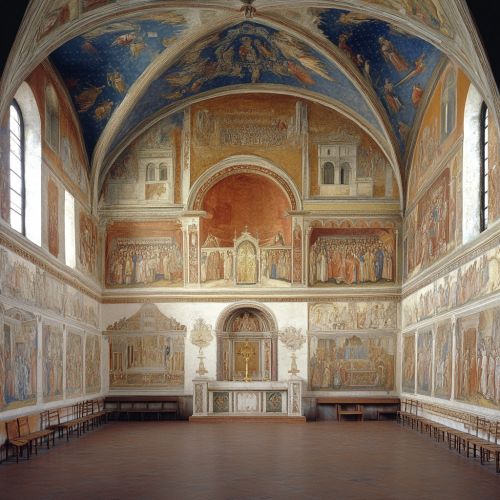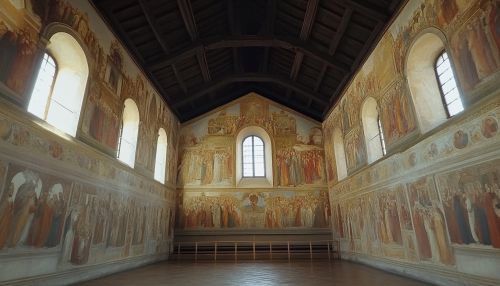Giotto di Bondone
Early Life and Background
Giotto di Bondone, commonly known as Giotto, was an Italian painter and architect from Florence during the Late Middle Ages. He is considered one of the foremost artists of the Proto-Renaissance period. Born around 1267 in the village of Colle di Vespignano, near Florence, Giotto's early life remains somewhat obscure, with much of what is known about him derived from later sources, including the writings of Giorgio Vasari.
Artistic Training and Influences
Giotto's artistic training is believed to have begun under the tutelage of Cimabue, a prominent Florentine painter of the time. Cimabue's influence on Giotto is evident in his early works, which exhibit a transition from the Byzantine style that dominated the period to a more naturalistic approach. This shift marked the beginning of a new era in Western art, characterized by an emphasis on realism and human emotion.
Major Works and Contributions
Giotto's contributions to art are vast, with his most notable works including the frescoes in the Scrovegni Chapel in Padua, the Basilica of St. Francis in Assisi, and the Santa Croce in Florence.
Scrovegni Chapel
The Scrovegni Chapel, also known as the Arena Chapel, houses one of Giotto's most famous fresco cycles, completed around 1305. The frescoes depict scenes from the lives of the Virgin Mary and Christ, showcasing Giotto's innovative use of perspective, light, and color to create a sense of depth and realism.


Basilica of St. Francis
In the Basilica of St. Francis in Assisi, Giotto contributed to the decoration of the Upper Church with a series of frescoes illustrating the life of St. Francis. These works are significant for their narrative clarity and emotional intensity, which were groundbreaking at the time.
Santa Croce
Giotto's work in the Santa Croce in Florence includes the Bardi and Peruzzi Chapels, where he painted scenes from the lives of St. Francis and St. John the Baptist. These frescoes further demonstrate his mastery of composition and his ability to convey complex theological themes through visual art.
Architectural Achievements
In addition to his painting, Giotto was also an accomplished architect. His most notable architectural work is the design of the Campanile (bell tower) of the Florence Cathedral, also known as Giotto's Campanile. Although he did not live to see its completion, his design set the standard for Gothic architecture in Florence.
Legacy and Influence
Giotto's impact on the development of Western art cannot be overstated. His break from the Byzantine style and his pioneering use of naturalism laid the groundwork for the Renaissance. Artists such as Masaccio, Michelangelo, and Leonardo da Vinci drew inspiration from Giotto's techniques and innovations.
